Mochi is a traditional Japanese food made by steaming and pounding glutinous rice. It has a distinctive chewy texture and a subtle sweetness that becomes more pronounced as you chew. Mochi plays a crucial role in Japanese celebrations and events, particularly during the New Year. It is also valued for its long shelf life and versatility in various dishes.
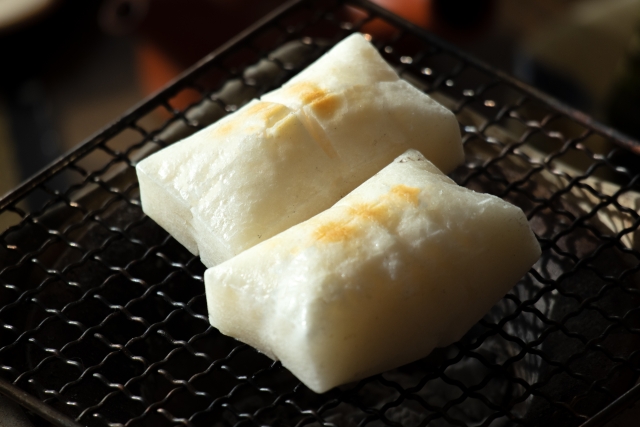
Difference Between Traditional Mochi and Wagashi Mochi
Mochi used in traditional Japanese cuisine and mochi used in wagashi (Japanese sweets) differ in texture, ingredients, and purpose.
- Traditional Mochi: Made purely from steamed and pounded glutinous rice, giving it a chewy and elastic texture. It is often eaten grilled, boiled, or added to soups.
- Wagashi Mochi: Typically softer and made with sweetened glutinous rice flour (such as shiratamako or mochiko) mixed with water and sugar. This type is used in sweets like daifuku and warabi mochi, resulting in a smoother, more delicate texture.
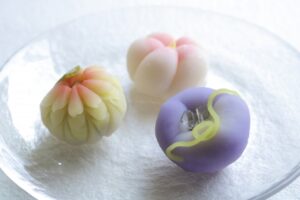
Characteristics of Mochi
Mochi is known for its unique texture, which is both elastic and chewy. The phrase “mochi-mochi” (もちもち) is often used to describe its soft yet resilient consistency. When bitten into, mochi stretches slightly before breaking apart, making it distinct from other rice-based foods.
Choking Hazard
Due to its sticky and elastic nature, mochi can be difficult to swallow, especially for children and the elderly. Every year, there are reports in Japan of people choking on mochi, particularly during New Year’s celebrations when it is commonly eaten in ozoni (a traditional soup).
To prevent choking:
- Cut mochi into smaller pieces before eating.
- Chew thoroughly before swallowing.
- Drink warm tea or soup to help it slide down.
- Be cautious when serving mochi to the elderly or small children.
Types of Mochi
Mochi comes in many varieties, each with unique characteristics depending on the region and purpose.
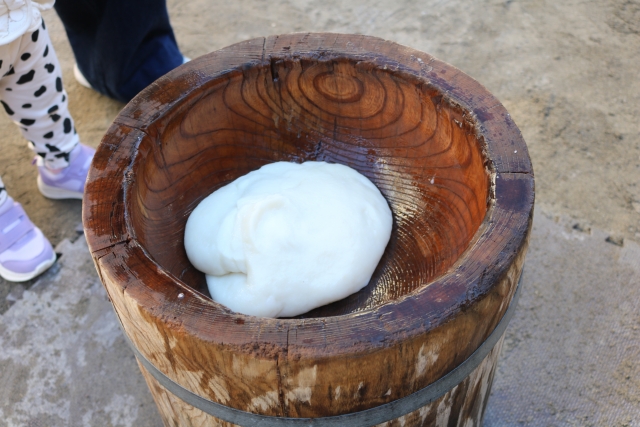
Soft, freshly pounded mochi that is best eaten immediately.
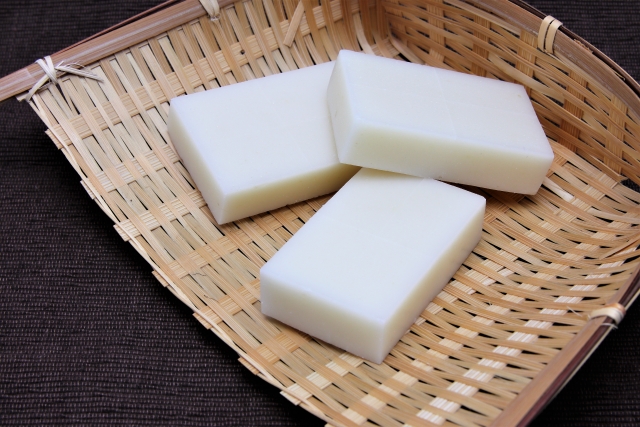
Rectangular, dried mochi with a long shelf life.
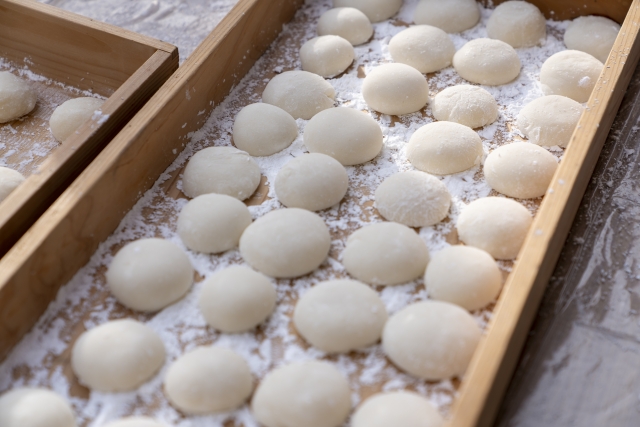
Popular in western Japan, often used in ozoni (New Year’s soup).
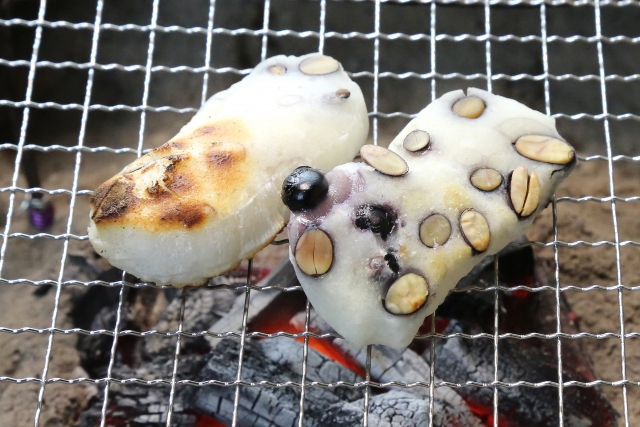
Mochi mixed with black beans or mugwort for added flavor and nutrients.
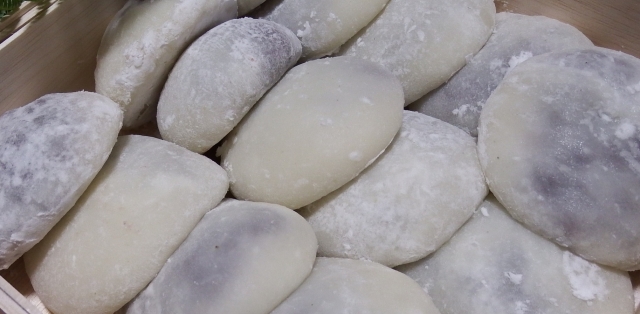
Sweet mochi with red bean paste inside, resembling wagashi (traditional Japanese sweets)
Ways to Eat Mochi
Mochi can be enjoyed in various ways, including grilling, boiling, and frying.

Grilled until golden brown and eaten with soy sauce or wrapped in seaweed.
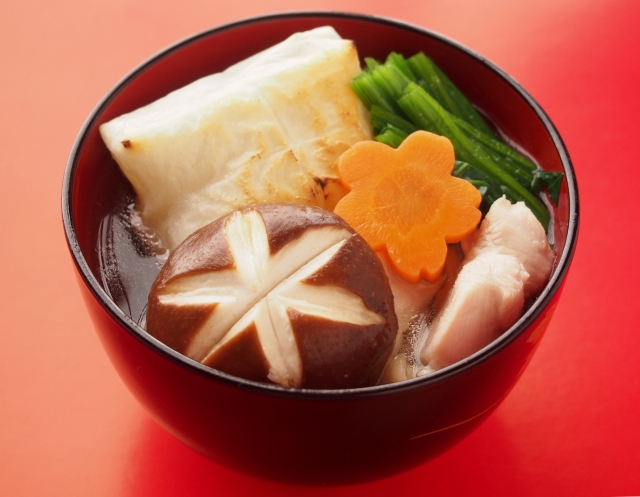
A traditional New Year’s soup with different regional variations in broth and ingredients.
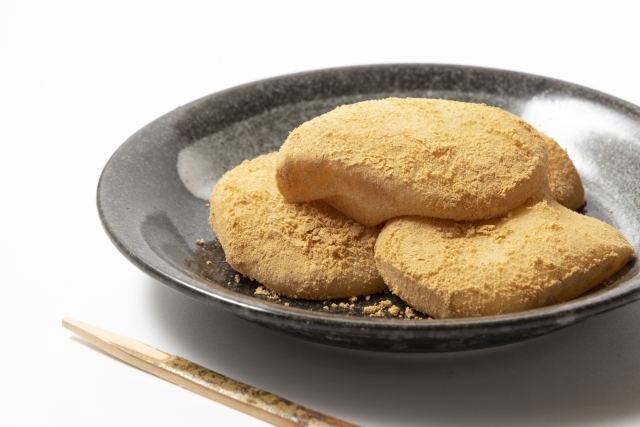
Boiled mochi coated in sweet soybean flour.
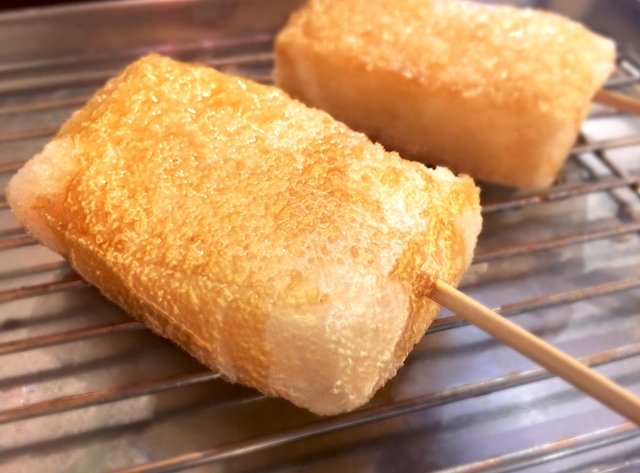
Mochi deep-fried until crispy and seasoned with salt or sugar.
How Mochi is Made
Mochi can be made using traditional manual methods (kine-tsuki) or with machines, but the basic process remains the same.
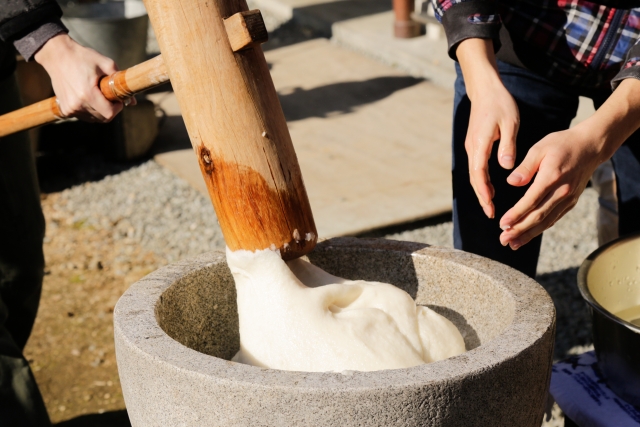
- Preparing Glutinous Rice: The rice is soaked in water to fully absorb moisture.
- Steaming: The rice is steamed until soft and fluffy.
- Pounding: The steamed rice is pounded using a mortar and pestle (usu and kine) or a machine until it becomes smooth and sticky.
- Shaping and Storing: The mochi is divided into portions and shaped into round or square forms for storage.
Nutritional Value of Mochi
Mochi is a rich source of carbohydrates, making it an excellent energy source. It is also easily digestible and provides a feeling of fullness even in small amounts.
- Carbohydrates: The main component, providing quick energy.
- Protein: Contains plant-based protein from glutinous rice.
- Fat: Almost none, making it a low-fat food.
- Vitamins & Minerals: Contains small amounts of B vitamins (especially B1) that support metabolism, as well as minerals like potassium and magnesium.
However, mochi has a high glycemic index, meaning it can raise blood sugar levels quickly, so it should be consumed in moderation.
Cultural Significance of Mochi
Mochi is deeply tied to Japanese culture, especially in winter and during celebrations. It is a key part of New Year’s traditions, symbolizing prosperity and family unity. Warm mochi dishes like ozoni and shiruko are enjoyed in the colder months, making mochi a comforting seasonal food.
History of Mochi
Mochi has been eaten in Japan since the Nara period (8th century) and was used in rituals and celebrations. Samurai later carried it as a portable food. By the Edo period (1603–1868), it became popular among common people, especially as a New Year’s tradition. Today, mochi remains an important part of Japanese culture.
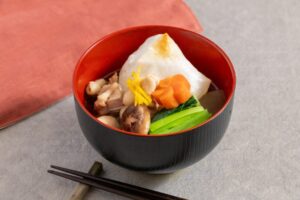
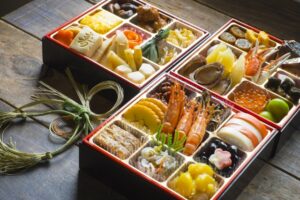
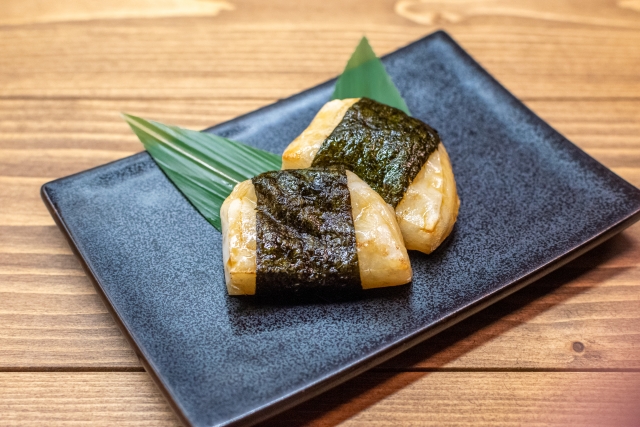
Comments